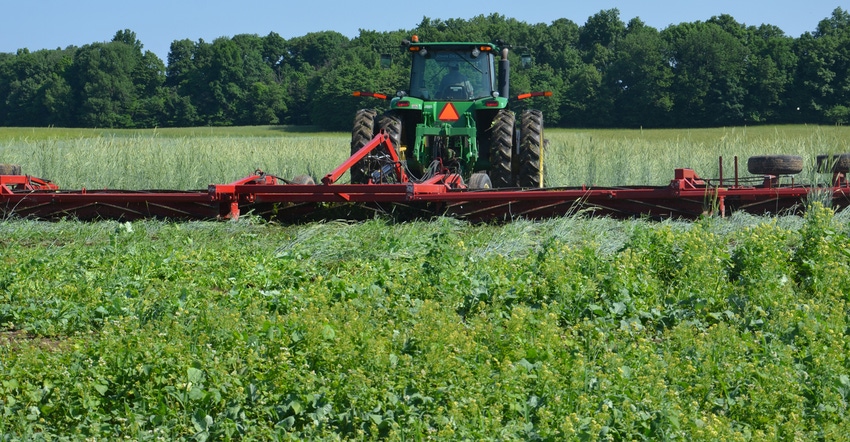
If you want to make no-till and cover crops work for you, you will figure out how to make it happen. Carter Morgan says that while there is no real secret to success in no-tilling with cover crops, much of the advice he offers people who want to try it revolves around developing a positive attitude toward these practices.
Morgan’s role with the Vermillion County Soil and Water Conservation District in Indiana is to encourage people to try no-till and cover crops. He’s also part of a family farming operation that is 100% no-till and dedicated to using as many cover crops as possible. Other family members in the operation include his brother Bret, his dad, Brian, and his uncle Darrell.
5 take-home messages
When Morgan addresses audiences about no-till and cover crops, he likes to leave them with these five ways they can either begin with the practices or improve what they’re already doing:
1. Surround yourself with good people. In Morgan’s case, one of those people is Betsy Bower, an agronomist with Ceres Solutions Co-op in west-central Indiana. Bower works with many farmers who want to make no-till and cover crops work. She is one of the Ceres agronomists heavily involved in supporting farmers in the Big Pine Watershed in parts of four counties in the northern part of west-central Indiana.
“This can also include spending time with like-minded farmers and setting up a network of people you can ask for advice,” Morgan says. “Who you hang around with is often reflected in your actions.”
One axiom he likes to share with farmers is: “Show me your friends, and I will show you your future.”
2. Try something new on your farm every year. One pair of no-till farmers bought a 6-foot crimper just to try out the practice. They don’t intend to use it to terminate all their cover corps, but they want to see how it works on a few acres of different types of cover crops.
3. Make a plan, but be flexible. “For us last year, that meant taking our row cleaners off after we had started planting,” Morgan says. “We got along better in 2019 when planting green without them.”
4. Do what you can to make it work. If you want this system to work on your farm, you can make it work. Maybe that means attending more conservation meetings where farmers will share their experiences about no-till and cover crops, including what doesn’t work.
Instead of having formal field days, some no-till farmers are now opting to host roundtable discussions where they invite like-minded farmers so they can share ideas. You might try to find one of those groups and ask to attend.
5. Believe what you see, not what you know. Especially when you try something new, the results in the field may not turn out as you expected. Just because you thought something would work — or wouldn’t work — doesn’t mean it will be so, Morgan says.
Be open to new things, new ideas and new observations. You may want to collect phone numbers and email addresses of other farmers who are doing the same types of things you want to do, to see if they see the same or different results.
Read more about:
No tillAbout the Author(s)
You May Also Like




